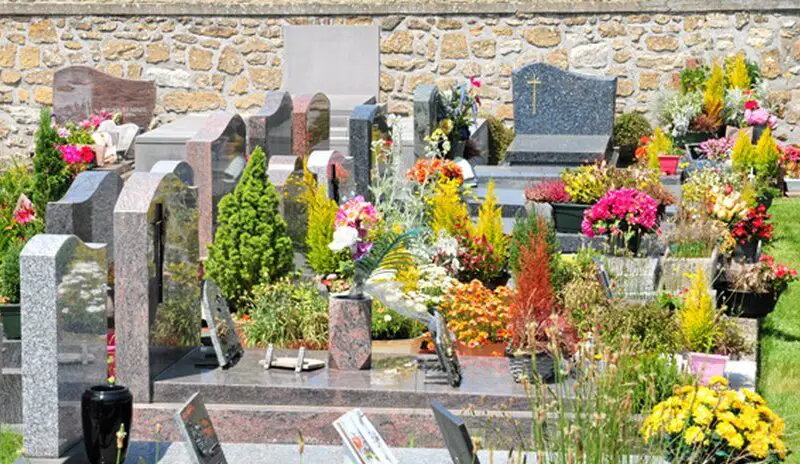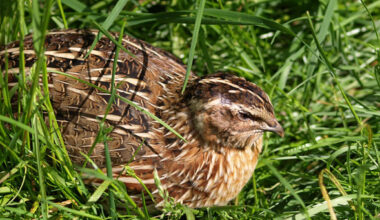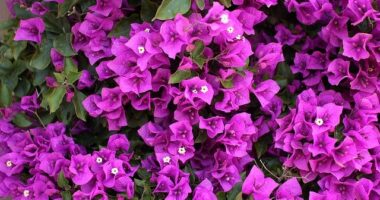Nowadays, few people visit the cemetery very often, due to lack of time or distance: it is therefore advisable to choose resistant plants to decorate the graves, which is not necessarily made easy due to infrequent maintenance and poor cultural conditions: poor soil due to earthworks, too much toasted by the sun with rains that run off with soil erosion.
There are not many articles that talk about flowers on tombs, and yet if there is a place where the flower takes on special importance, it is in a cemetery.
Contents
Why put plants in the cemetery?
The loss of someone is a life ordeal that we all face at some point in our lives. Going to the grave regularly is one way to find the person who disappeared, and bringing flowers or plants is part of the rituals to be respected.
Catholics usually choose November 1st as the date to visit the grave of their loved ones because it is a holiday that relieves them of their payroll obligations. The next day is also All Saints’ Day in the Catholic religion, a day on which the deceased are traditionally respected.
5 plants to put in the cemetery in summer
1. Dipladenia
Unavoidable perennial plant of cemetery, the dipladenia is extremely robust. Nowadays grouped under the name of Mandevilla, dipladenias are perennials forming a liana with shiny dark foliage.
They draw the moisture they need from their roots. The trumpet-shaped flowers of the dipladenia offer a multiplicity of colors and do not cease to reappear from May until the first frosts. To give the best of themselves, dipladenias need sunshine.
2. Lavender
Easy to cultivate, very aesthetic and nicely colored, lavender brings, in addition to its visual interest, a very pleasant perfume in a cemetery. It recalls the joy of shared moments and vacations in the South! To grow, it needs sunshine, because lavender is a perennial Mediterranean plant. It flowers between April and September.
3. The gauras
This perennial plant for cemetery keeps an average size according to the varieties. In the sun or half-shade, the gauras require little maintenance and bloom from May to October. Their flowers are sometimes white, sometimes pink and their culture is adapted to all the regions of France, including the seaside.
4. The zonal geranium
Is it still necessary to present the good old family geranium? More demanding however in watering and cleaning than the two previous flowers. But so floriferous and robust …
5. The Kalanchoe
This small indoor plant starts to come out on window sills and in sun-crushed gardens. True camel plant, it blooms without interruption throughout the summer. It offers a beautiful range of colors, mostly bright.
5 flowers to put on the graves in winter
1. Viola
Viola are aptly named. Symbolically very marked, the viola invite to remember, reminds us of nostalgia. This plant of winter is moreover extremely resistant.
Having different meanings according to the chosen color, the pansy can as well be synonymous with fidelity in love (pink), first love (white) or nostalgia of a love which passes (mauve), while being declined in other colors. Flowering throughout the winter, these small brave plants renew themselves until April. Tough, they belong to the rare plants which bloom in winter.
2. Helleborus, Christmas roses
Hellebore can withstand both frost (up to 5°F!) and lack of sunshine. Perfect for the cold season, the hellebore bears rather well its name of Christmas rose. It is very appreciated for its long winter bloom. Indeed, even under the snow, the hellebore blooms! According to its variety, the hellebore can begin to open in November and largely persist until March.
This perennial plant can be of an extremely pure white then take a pinkish-green tint when it wilts. There are many varieties, going from pink to yellow by way of white. Helleborus is thus an ideal plant to flower a grave in winter and to bring a little heat to an environment.
3. Hyacinths
Hyacinth is sublime and fragrant. To flower a grave in winter, the hyacinth will be of the most beautiful effect. In addition to its intoxicating scent that will bring a certain charm to the funeral monument, the hyacinth draws particular attention by the multitude of small curly bell-shaped flowers that it has.
Very sturdy, hyacinth will perfectly color a grave in wintertime. With its blue, white, yellow, orange, pink, red or purple tones, the hyacinth gives a very beautiful diversity to an environment. The hyacinth can withstand winter as long as it is not too harsh.
4. The chrysanthemum
When we think of cemeteries, we quickly think of the Chrysanthemum, which is easily associated with All Saints’ Day. However, this flowering plant should not be limited to this annual event. Indeed, the Chrysanthemum is the king of autumn, but it resists part of the winter. Moreover, it has warm colors that will allow you to decorate a funeral monument in the most beautiful way.
Even if the chrysanthemum is associated with a sad period in people’s minds, be aware that this popular thought is wrong. Because of its variety of colors, this flower embodies more and more longevity and joy. Historically rich, the Chrysanthemum is, for example, the emblem of Japan and every year the Land of the Rising Sun celebrates the “Festival of Happiness” by putting the Chrysanthemum in the spotlight.
5. The winter heather
The flowering of the heather is interesting because it offers a wide range of colors. To flower a grave in winter, it is ideal. In addition to embellishing a funerary monument, the heather is a plant that does not freeze!
A flowering without interruption from November to May, for a very interesting patchwork of colors. If you opt for heather in a planter, you could decorate your decoration with cyclamen, a flower that perfectly complements the heather and is also resistant to the cold.
Summary
Unless you live close to the cemetery where a loved one is buried, it is important to choose perennial grave plants that require little or no maintenance. Choose them according to your availability and the flowering season. If, for example, you are away for several weeks during the summer vacations, choose plants that can withstand drought.
In spring, spring bulbs will flower continuously for several weeks after being installed in the ground or in a pot.
Watering the plants during the summer and outside of frosty periods should be sufficient. Perennials do not tolerate excess moisture. It is preferable to water them generously once a week, rather than partially and very often.









